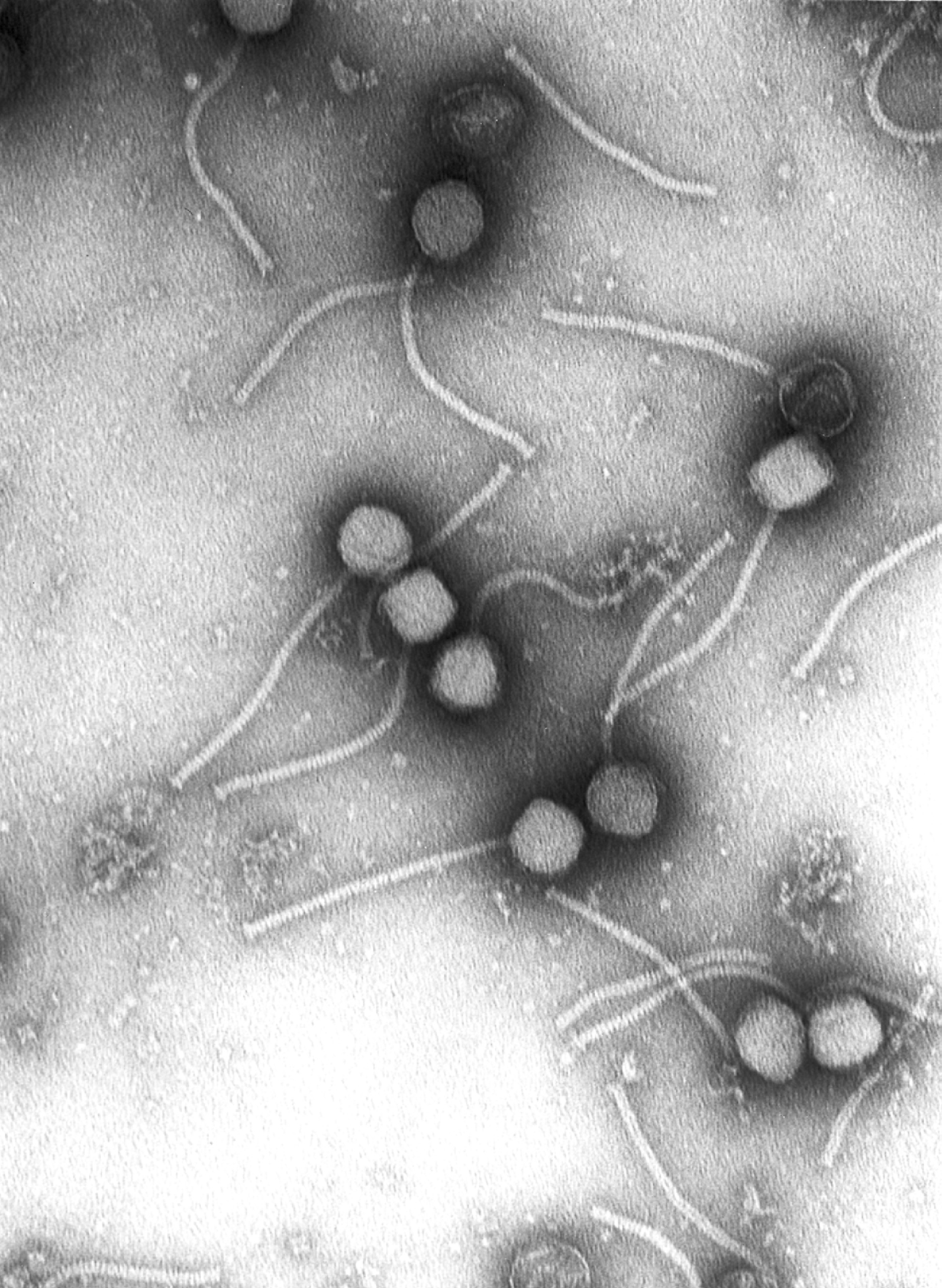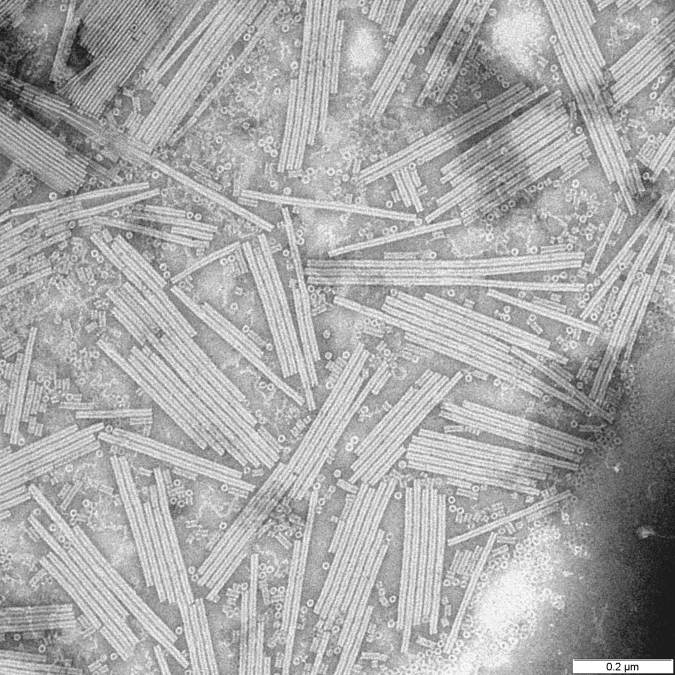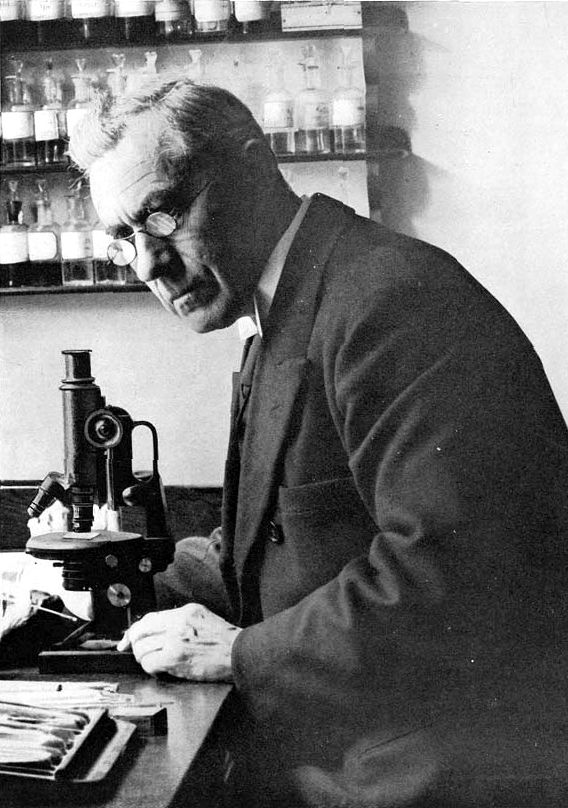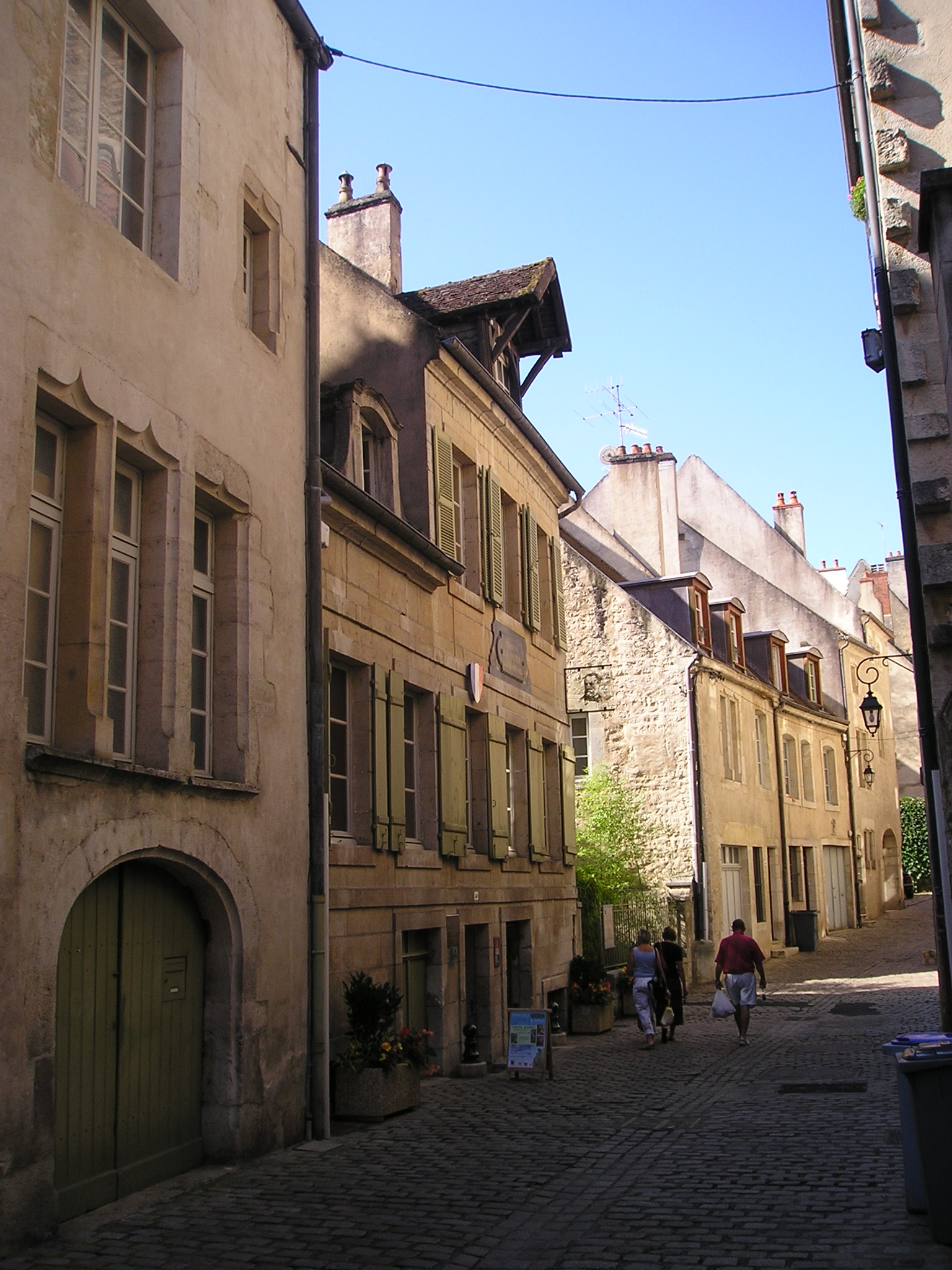|
Virologist
Virology is the scientific study of biological viruses. It is a subfield of microbiology that focuses on their detection, structure, classification and evolution, their methods of infection and exploitation of host cells for reproduction, their interaction with host organism physiology and immunity, the diseases they cause, the techniques to isolate and culture them, and their use in research and therapy. The identification of the causative agent of tobacco mosaic disease (TMV) as a novel pathogen by Martinus Beijerinck (1898) is now acknowledged as being the official beginning of the field of virology as a discipline distinct from bacteriology. He realized the source was neither a bacterial nor a fungal infection, but something completely different. Beijerinck used the word "virus" to describe the mysterious agent in his ' contagium vivum fluidum' ('contagious living fluid'). Rosalind Franklin proposed the full structure of the tobacco mosaic virus in 1955. One main moti ... [...More Info...] [...Related Items...] OR: [Wikipedia] [Google] [Baidu] |
History Of Virology
The history of virology – the scientific study of viruses and the infections they cause – began in the closing years of the 19th century. Although Edward Jenner and Louis Pasteur developed the first vaccines to protect against viral infections, they did not know that viruses existed. The first evidence of the existence of viruses came from experiments with filters that had pores small enough to retain bacteria. In 1892, Dmitri Ivanovsky used one of these filters to show that sap from a diseased tobacco plant remained infectious to healthy tobacco plants despite having been filtered. Martinus Beijerinck called the filtered, infectious substance a "virus" and this discovery is considered to be the beginning of virology. The subsequent discovery and partial characterization of bacteriophages by Frederick Twort and Félix d'Herelle further catalyzed the field, and by the early 20th century many viruses had been discovered. In 1926, Thomas Milton Rivers defined viruses as obliga ... [...More Info...] [...Related Items...] OR: [Wikipedia] [Google] [Baidu] |
Virus
A virus is a submicroscopic infectious agent that replicates only inside the living Cell (biology), cells of an organism. Viruses infect all life forms, from animals and plants to microorganisms, including bacteria and archaea. Viruses are found in almost every ecosystem on Earth and are the most numerous type of biological entity. Since Dmitri Ivanovsky's 1892 article describing a non-bacterial pathogen infecting tobacco plants and the discovery of the tobacco mosaic virus by Martinus Beijerinck in 1898, more than 16,000 of the millions of List of virus species, virus species have been described in detail. The study of viruses is known as virology, a subspeciality of microbiology. When infected, a host cell is often forced to rapidly produce thousands of copies of the original virus. When not inside an infected cell or in the process of infecting a cell, viruses exist in the form of independent viral particles, or ''virions'', consisting of (i) genetic material, i.e., long ... [...More Info...] [...Related Items...] OR: [Wikipedia] [Google] [Baidu] |
Microbiology
Microbiology () is the branches of science, scientific study of microorganisms, those being of unicellular organism, unicellular (single-celled), multicellular organism, multicellular (consisting of complex cells), or non-cellular life, acellular (lacking cells). Microbiology encompasses numerous sub-disciplines including virology, bacteriology, protistology, mycology, immunology, and parasitology. The organisms that constitute the microbial world are characterized as either prokaryotes or eukaryotes; eukaryote, Eukaryotic microorganisms possess membrane-bound organelles and include fungi and protists, whereas prokaryote, prokaryotic organisms are conventionally classified as lacking membrane-bound organelles and include Bacteria and Archaea. Microbiologists traditionally relied on culture, staining, and microscopy for the isolation and identification of microorganisms. However, less than 1% of the microorganisms present in common environments can be cultured in isolation using c ... [...More Info...] [...Related Items...] OR: [Wikipedia] [Google] [Baidu] |
Dmitri Ivanovsky
Dmitri Iosifovich Ivanovsky (alternative spelling ''Dmitrii'' or ''Dmitry Iwanowski''; ; 28 October 1864 – 20 June 1920) was a Russian botanist, the co-discoverer of :viruses (1892), and one of the founders of virology. Life Ivanovsky was born in the village of Nizy, Gdov Uyezd. He studied at the University of Saint Petersburg under Andrei Famintsyn in 1887, when he was sent to Ukraine and Bessarabia to investigate a tobacco disease causing great damage to plantations located there at the time. Three years later, he was assigned to look into a similar disease occurrence of tobacco plants, this time raging in the Crimea region. He discovered that both incidents of disease were caused by an extremely minuscule infectious agent, capable of permeating porcelain Pasteur-Chamberland filters, something which bacteria could never do. He described his findings in an article (1892) and a dissertation (1902). Then he worked at the Imperial University of Warsaw and at Donskoy Unive ... [...More Info...] [...Related Items...] OR: [Wikipedia] [Google] [Baidu] |
Rosalind Franklin
Rosalind Elsie Franklin (25 July 192016 April 1958) was a British chemist and X-ray crystallographer. Her work was central to the understanding of the molecular structures of DNA (deoxyribonucleic acid), RNA (ribonucleic acid), viruses, coal, and graphite. Although her works on coal and viruses were appreciated in her lifetime, Franklin's contributions to the discovery of the structure of DNA were largely unrecognised during her life, for which Franklin has been variously referred to as the "wronged heroine", the "dark lady of DNA", the "forgotten heroine", a "feminist icon", and the "Sylvia Plath of molecular biology". Franklin graduated in 1941 with a degree in Natural Sciences (Cambridge), natural sciences from Newnham College, Cambridge, and then enrolled for a PhD in physical chemistry under Ronald George Wreyford Norrish, the 1920 Chair of Physical Chemistry at the University of Cambridge. Disappointed by Norrish's lack of enthusiasm, she took up a research position und ... [...More Info...] [...Related Items...] OR: [Wikipedia] [Google] [Baidu] |
Contagium Vivum Fluidum
''Contagium vivum fluidum'' (Latin: "contagious living fluid") was a phrase first used to describe a virus, and underlined its ability to slip through the finest ceramic filters then available, giving it almost liquid properties. Martinus Beijerinck (1851–1931), a Dutch microbiologist and botanist, first used the term when studying the tobacco mosaic virus, becoming convinced that the virus had a liquid nature. The word "virus", from the Latin for "poison", was originally used to refer to any infectious agent, and gradually became used to refer to infectious particles. Bacteria could be seen under microscope, and cultured on agar plates. In 1890, Louis Pasteur declared "tout virus est un microbe": "all infectious diseases are caused by microbes". In 1892, Dmitri Ivanovsky discovered that the cause of tobacco mosaic disease could pass through Chamberland's porcelain filter. Infected sap, passed through the filter, retained its infectious properties. Ivanovsky thought the diseas ... [...More Info...] [...Related Items...] OR: [Wikipedia] [Google] [Baidu] |
Martinus Beijerinck
Martinus Willem Beijerinck (, 16 March 1851 – 1 January 1931) was a Dutch microbiologist and botanist who was one of the founders of virology and environmental microbiology. He is credited with the co-discovery of viruses A virus is a submicroscopic infectious agent that replicates only inside the living cells of an organism. Viruses infect all life forms, from animals and plants to microorganisms, including bacteria and archaea. Viruses are found in almo ... (1898), which he called "''contagium vivum fluidum''". Life Early life and education Born in Amsterdam, Beijerinck studied at the Technical School of Delft, where he was awarded the degree of biology in 1872. He obtained his Doctor of Science degree from the University of Leiden in 1877. At the time, Delft, then a List of institutions using the term "institute of technology" or "polytechnic", Polytechnic, did not have the right to confer doctorates, so Leiden did this for them. He became a teacher in microb ... [...More Info...] [...Related Items...] OR: [Wikipedia] [Google] [Baidu] |
Martinus Willem Beijerinck In His Laboratory
Martinus is a given name or surname. It comes from the Latin name ''Martinus'', which is a late derived form of the name of the Roman god Mars, protective godhead of the Latins and, therefore, god of war. New completed edition by Marie-Thérèse Morlet. Given name People primarily known only by the given name * Martin (magister militum per Armeniam), 6th-century Byzantine/East Roman general * Martinus (son of Heraclius), 7th-century Byzantine/East Roman co-emperor * Martinus of Arles, doctor of theology, priest, and author on demonology and witches * Saint Martinus or Saint Martin of Tours Other * Martinus Beijerinck (1851–1931), Dutch microbiologist * Martinus von Biberach (died 1498), theologian from Heilbronn, Germany * Martinus Bosselaar (1936–2018), Dutch football (soccer) player * Martinus Brandal (born 1960), Norwegian engineer and businessman * Martinus Dom (1791–1873), first abbot of the Trappist Abbey of Westmalle * Martinus Fabri, Dutch composer of the late ... [...More Info...] [...Related Items...] OR: [Wikipedia] [Google] [Baidu] |
Bacteria
Bacteria (; : bacterium) are ubiquitous, mostly free-living organisms often consisting of one Cell (biology), biological cell. They constitute a large domain (biology), domain of Prokaryote, prokaryotic microorganisms. Typically a few micrometres in length, bacteria were among the first life forms to appear on Earth, and are present in most of its habitats. Bacteria inhabit the air, soil, water, Hot spring, acidic hot springs, radioactive waste, and the deep biosphere of Earth's crust. Bacteria play a vital role in many stages of the nutrient cycle by recycling nutrients and the nitrogen fixation, fixation of nitrogen from the Earth's atmosphere, atmosphere. The nutrient cycle includes the decomposition of cadaver, dead bodies; bacteria are responsible for the putrefaction stage in this process. In the biological communities surrounding hydrothermal vents and cold seeps, extremophile bacteria provide the nutrients needed to sustain life by converting dissolved compounds, suc ... [...More Info...] [...Related Items...] OR: [Wikipedia] [Google] [Baidu] |
Microorganism
A microorganism, or microbe, is an organism of microscopic scale, microscopic size, which may exist in its unicellular organism, single-celled form or as a Colony (biology)#Microbial colonies, colony of cells. The possible existence of unseen microbial life was suspected from antiquity, with an early attestation in Jain literature authored in 6th-century BC India. The scientific study of microorganisms began with their observation under the microscope in the 1670s by Anton van Leeuwenhoek. In the 1850s, Louis Pasteur found that microorganisms caused food spoilage, debunking the theory of spontaneous generation. In the 1880s, Robert Koch discovered that microorganisms caused the diseases tuberculosis, cholera, diphtheria, and anthrax. Microorganisms are extremely diverse, representing most unicellular organisms in all three domains of life: two of the three domains, Archaea and Bacteria, only contain microorganisms. The third domain, Eukaryota, includes all multicellular o ... [...More Info...] [...Related Items...] OR: [Wikipedia] [Google] [Baidu] |
Gamma Phage
Gamma (; uppercase , lowercase ; ) is the third letter of the Greek alphabet. In the system of Greek numerals it has a value of 3. In Ancient Greek, the letter gamma represented a voiced velar stop . In Modern Greek, this letter normally represents a voiced velar fricative , except before either of the two front vowels (/e/, /i/), where it represents a voiced palatal fricative ; while /g/ in foreign words is instead commonly transcribed as γκ). In the International Phonetic Alphabet and other modern Latin-alphabet based phonetic notations, it represents the voiced velar fricative. History The Greek letter Gamma Γ is a grapheme derived from the Phoenician letter (''gīml'') which was rotated from the right-to-left script of Canaanite to accommodate the Greek language's writing system of left-to-right. The Canaanite grapheme represented the /g/ phoneme in the Canaanite language, and as such is cognate with ''gimel'' ג of the Hebrew alphabet. Based on its name, the lett ... [...More Info...] [...Related Items...] OR: [Wikipedia] [Google] [Baidu] |
Louis Pasteur
Louis Pasteur (, ; 27 December 1822 – 28 September 1895) was a French chemist, pharmacist, and microbiologist renowned for his discoveries of the principles of vaccination, Fermentation, microbial fermentation, and pasteurization, the last of which was named after him. His research in chemistry led to remarkable breakthroughs in the understanding of the causes and preventions of diseases, which laid down the foundations of hygiene, public health and much of modern medicine. Pasteur's works are credited with saving millions of lives through the developments of vaccines for rabies vaccine, rabies and anthrax vaccine, anthrax. He is regarded as one of the founders of modern bacteriology and has been honored as the "father of bacteriology" and the "father of microbiology" (together with Robert Koch; the latter epithet also attributed to Antonie van Leeuwenhoek). Pasteur was responsible for disproving the doctrine of spontaneous generation. Under the auspices of the French Aca ... [...More Info...] [...Related Items...] OR: [Wikipedia] [Google] [Baidu] |









